Recent research projects run by Dr E Thompson (University of Greenwich), the photovoltaics company Polysolar, and Hugh Lowe Farms in Kent, have been exploring the potential for UK soft fruit farms to harness solar power while simultaneously producing high quality crops.
By retrofitting semi-transparent photovoltaic materials to glasshouses and polytunnels, the projects have demonstrated how solar energy generation and crop production can coexist successfully on the same plot of land – without outlay on new structures.
This approach has potential to improve sustainability, reduce land requirements, and lower farming costs – and the project has generated significant interest, with major breeders and supermarkets visiting the installations.
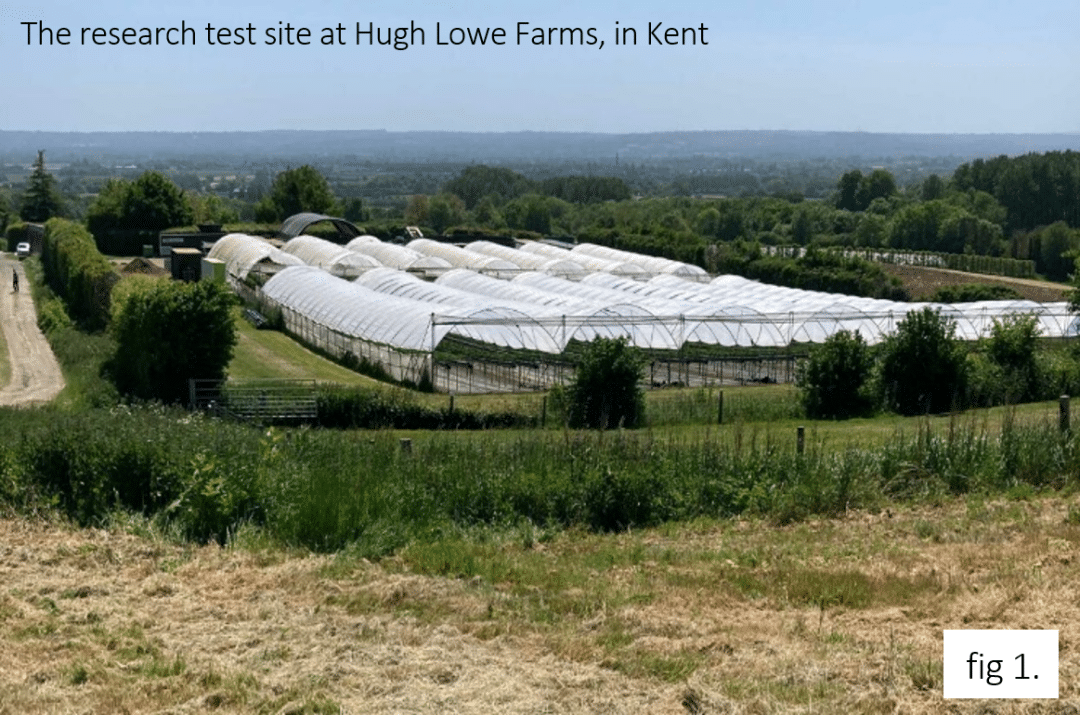
As part of the project, the University of Greenwich team is also assessing how the use of various colour tinted (semi-transparent) glass solar panels affects the growth of crops, as these partition light wavelengths for plant photosynthesis or electricity generation. This work continues a long-running collaboration with other academic photosynthesis researchers, following their pilot study of leafy greens.
Research Methodology and the BF5 Sensor
Much of the team’s research is being conducted at Hugh Lowe Farms (fig 1.) – a prominent commercial soft fruit grower in Kent. Specialised agritech solar panel materials are selected for the project by British company Polysolar Ltd. After successful trials of installations, the polytunnel photovoltaics are fitted and moved by farm staff as needed.
Polytunnels are retrofitted with long narrow strips of flexible PV material over the roof’s curvature – at intervals across the length of the enclosure (fig 2.). The team is experimenting with different patterns of PV strip deployment and interval widths for tailored patterns of shade.
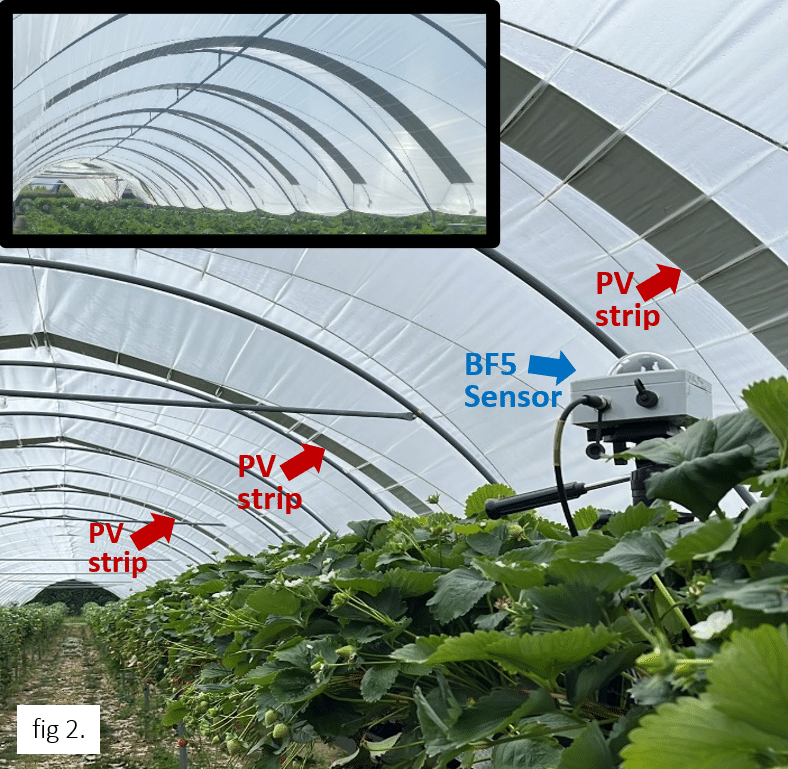
Commercial crops are being cultivated in several polytunnel sites, where a key research aim is to identify any effects from PV materials (and the shade they create) on plant growth, health and yield.
Delta-T Devices’ BF5 Sunshine Sensor is playing a crucial role in accurately assessing the amount of solar radiation penetrating the polytunnel – both in areas directly shaded by the tinted PV strips and unshaded areas.
The data allows the research team to compare plant growth characteristics with the amount and quality of light that reaches the trials areas for the agrivoltaic crops.
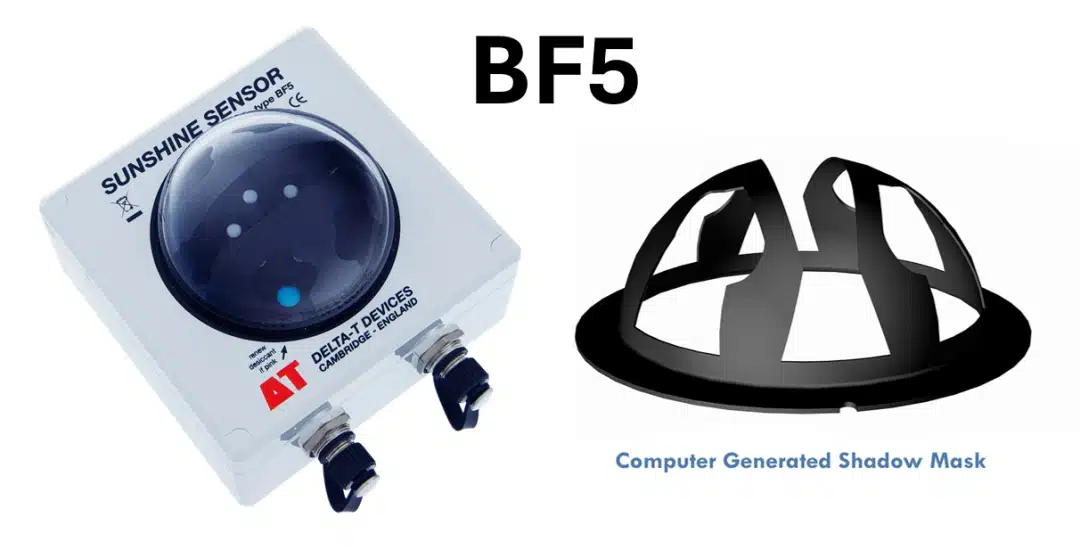
The BF5 (fig 3.) is a compact, no-moving-parts, instrument that can measure both direct and diffuse solar radiation, and which can be easily repositioned to meet the needs of the experiment.
The team have deployed two BF5 Sensors at the site to give reliable measurements of solar radiation throughout each day.
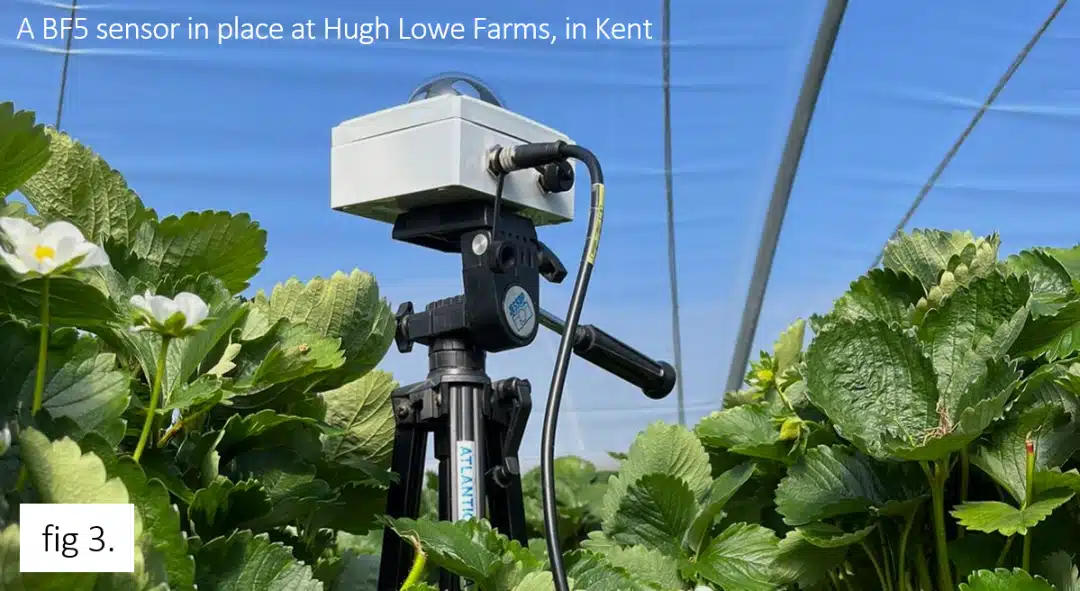
One BF5 is housed within the polytunnel in an unshaded area, and one is positioned in a photovoltaics-shaded zone. This approach allows the team to generate absolute radiation measurements and calculate the differences in light levels that reach the crop plants via the PV panelled and non- PV panelled sections of the polytunnel– see figs. 4, 6 and 7 for example data – throughout the day.
Hand-held light meters are also employed at multiple strategic points within and externally, to make spot measurements – see fig. 5 for example data.
The electricity generated by the PV panels is fed into a large battery, where it can meet diverse power needs, from the powering of irrigation, electric vehicles or robotic systems.
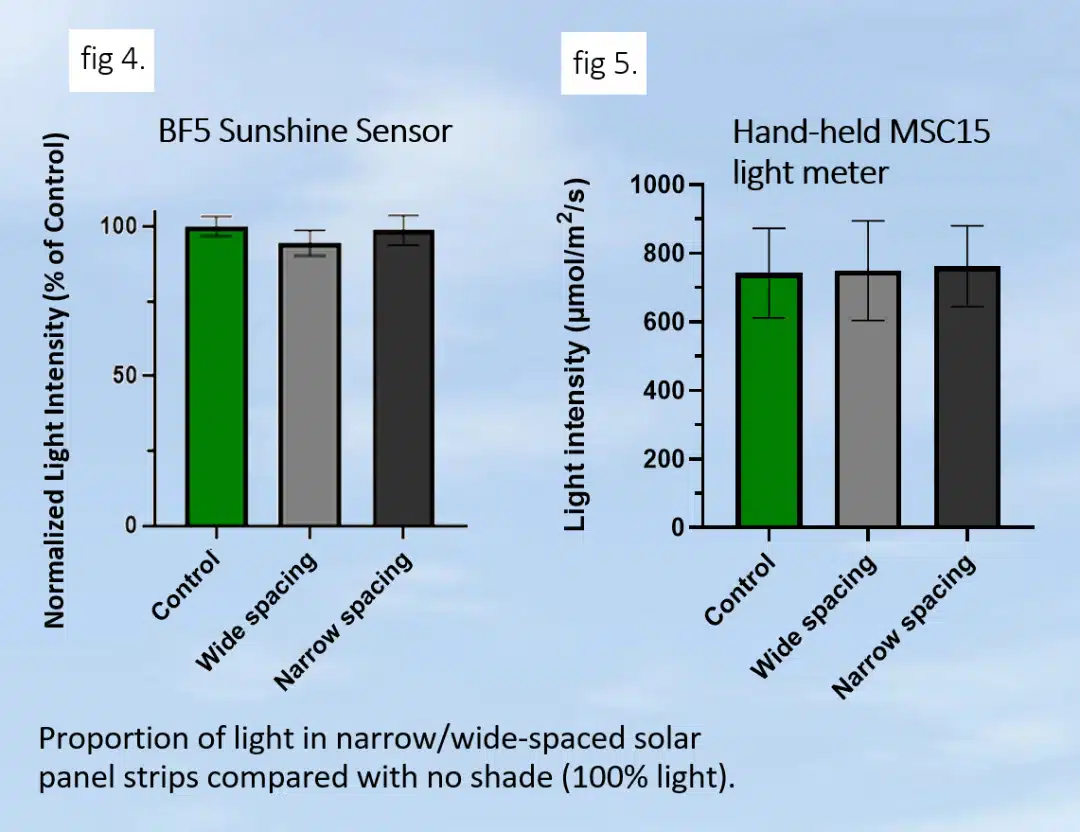
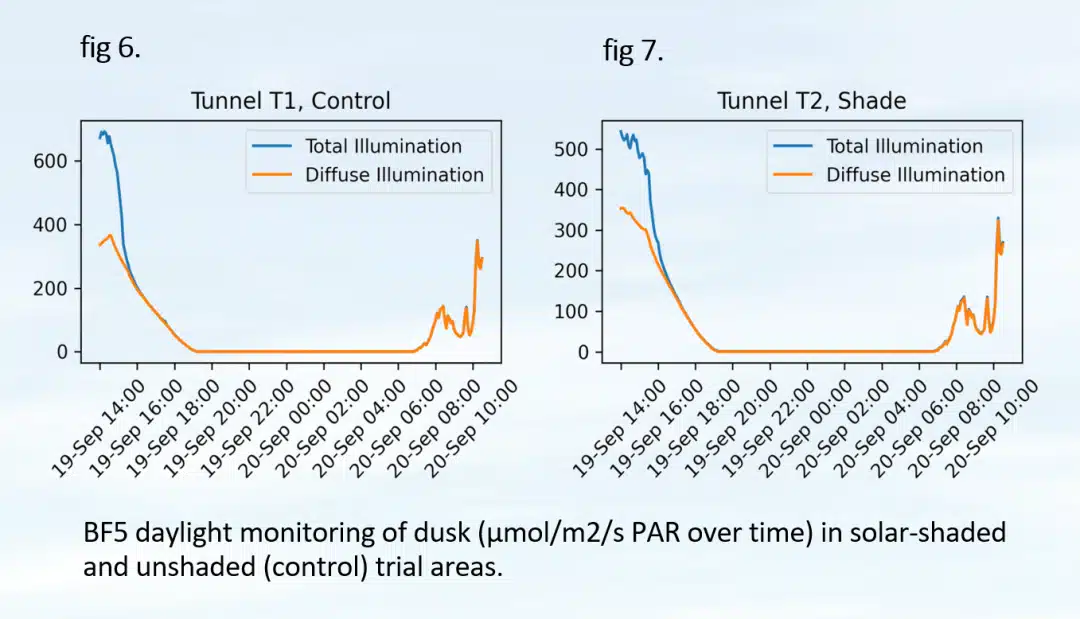
The Team’s Findings so Far:
Retrofitting of solar panels
“Retrofitting panels onto existing buildings is more cost-effective than building new structures from scratch. This approach also maximizes land use by generating both crops and electricity, rather than using valuable agricultural land for dedicated solar installations. In our trials, all photovoltaic systems are retrofitted onto current greenhouse and polytunnel structures.”
Environmental impact of the panels on crops
“The shade provided by panels was already suggested to enhance the water use efficiency for protected crop systems. During the summer, soft fruits can even suffer from too much direct sunlight, and plants usually experience an excess of light for photosynthesis, even in the UK. Slight variations in humidity and temperature occur but have shown little impact on the crop and its environment.
We do notice changes in photosynthesis at a molecular level. Coloured shade especially causes differences according to the crop type, much as has been reported before with use of coloured LED lighting. We’re actively studying how useful changes in crop nutrition could be controlled in these tinted-glass systems and are evaluating which crops are most compatible.
Some crops thrive under shade, while others may not be suitable for this system at all.”
Volume of energy generation
“The energy yield from flexible panels depends on the area of roof covered by the panels, our arrangement of which has been influenced by the choice of crop underneath. A conservative estimate suggests that our current installation over commercial strawberries on sections of four large polytunnels generates about 100 – 130MWh per hectare annually.”
The effect of tinted solar panels
“Our tinted semi-transparent photovoltaic panels allow more orange and red parts of the light spectrum to reach the plants while converting the bluer wavelengths into electricity. In our previous project, we discovered higher protein levels in leafy crops under high red-light ratios. We are exploring these effects on a wider range of crops and measuring the solar yield produced in larger trials.”
The benefits of this type of energy generation system
“The system offers a financial benefit by generating energy that can be sold to the grid, used to offset the farm’s electricity consumption, or support the operation of electrically powered automation. We are currently assessing the potential of the agrivoltaic system’s energy output to reduce power usage, with further insights to come as the project advances.
Energy demand fluctuates throughout the year. In the summer, the farm and solar operate at full capacity, supplying power for the water pumps, UV-treatment and picking robots, land maintenance kit, and other vehicles and machinery.”
Using the BF5 Sunshine Sensor
“The BF5 has been seamlessly providing us with the reliable solar radiation data we need to conduct this research. Its readings are crucial to extending what is possible with hand-held spot meters – and its robust compact form factor makes it fast and easy to position at strategic points of interest.”
More information on the BF5 Sensor

